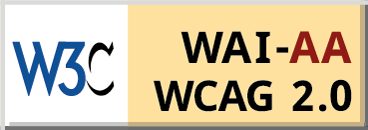Emerging India: Security and Foreign Policy Perspectives
Publishers: IDSA and Promilla & Co.
ISBN: 81-86019-51-0
Rs 795
US $ 30
- N. S. Sisodia , C Uday Bhaskar |
- 2005 |
- Book
Home » Book
Publishers: IDSA and Promilla & Co.
ISBN: 81-86019-51-0
Rs 795
US $ 30
Publishers: Promilla & Co. and Bibliphile South Asia
ISBN: 81-85002-76-2
Rs. 295
US $ 14.95
The volume, divided into four sections, deals with strategic developments pertaining to Asia. Recognising the diverse 'push' and 'pull' factors impinging on a country's strategic posture, the volume starts off by dealing with issues which the Advisory Committee of Experts guiding this publication felt were of immediate relevance.
The 21st century has been described as the ‘Asian Century.’ Home to 60 per cent of the world’s population and accounting for one-fourth of its Gross Domestic Product, by 2050, Asia will also have three of the world’s largest economies—China, India, and Japan. A dynamic hub in this rising Asia is the Southeast Asian region—encompassing diverse countries, peoples and cultures. The 9th Asian Security Conference addressed a range of issues and trends affecting this crucial region and their implications for regional and Asian security.
IDSA Asian Strategic Review 2008, the second volume in the series of Annual Surveys revived by the Institute in the previous year, is divided into six sections.
The contemporary strategic context is increasingly defined by the rapid growth of major Asian economies and the rapidly increasing interest the major powers are evincing in the region. It has also resulted in a perceptible shift in power to the Asian continent.
This insightful book, with contributions by leading experts on the nuclear issue in India, covers all such important aspects and provides robust analysis of the global nuclear order in terms of its implications for India and global disarmament.
Report of the IDSA Working Group
The Working Group Report identifies India's key vulnerabilities. Future projections of surface warming over India indicate that the annual mean area averaged surface warming is likely to be between 2 degrees and 3 degrees celcius and 3.5 and 5.5 degrees celcius by the middle and end of 21st century respectively.
This is an insightful analysis of inter- and intra-state conflicts and tensions in the countries of Asia even as the centre of gravity of economic, political and technological power is shifting from the Trans-Atlantic zone to Asia, particularly to East, South and Southeast Asia.
IDSA set up a Task Force to examine the issues concerning disarmament with Shri Satish Chandra, formerly India’s Ambassador to Conference on Disarmament and Deputy National Security Advisor (NSA) as Chair. This report is the outcome of its deliberations. It seeks to examine the obstacles to nuclear disarmament and the manner in which they can be removed. It reiterates the dangers of the nuclear weapon states persisting with their current policies of privileging nuclear weapons in their security postures and neglecting their obligations under article VI of the nuclear non-proliferation treaty (NPT).



